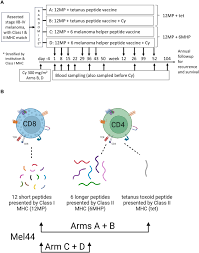In recent years, the field of robotics has seen tremendous growth and innovation, with researchers continuously pushing the boundaries of what is possible. One such breakthrough comes from a team of researchers who have developed a groundbreaking soft robotic gripper inspired by geckos. Their study, published in the journal Nature Communications, sheds light on how adopting the unique adhesive properties of gecko feet can significantly enhance the capabilities of soft robots.
Geckos are known for their remarkable climbing abilities, thanks to the millions of tiny hairs on their feet that create strong adhesive forces through van der Waals interactions. Drawing inspiration from this natural design, the researchers set out to develop a soft gripper that could mimic this adhesion mechanism while also being capable of conforming to a variety of surfaces.
The soft robotic gripper developed by the team consists of a silicone rubber structure with a series of adhesive pads on the surface. These pads are covered with microstructured features inspired by the hierarchical micro- and nanoscale structures found on gecko feet. By carefully engineering the size, shape, and arrangement of these features, the researchers were able to create a gripper that could generate strong adhesive forces on both smooth and rough surfaces.
One of the key advantages of the soft robotic gripper is its ability to conform to complex shapes and textures, allowing it to securely grasp objects of various sizes and geometries. This flexibility is essential for applications in fields such as manufacturing, agriculture, and search and rescue, where robots need to manipulate objects in unstructured environments.
To test the performance of their soft gripper, the researchers conducted a series of gripping experiments on objects with different surface roughness levels. The results demonstrated that the gripper could achieve high adhesion forces on a wide range of surfaces, outperforming traditional robotic grippers in terms of versatility and adaptability.
Moreover, the gripper showed excellent repeatability and durability over multiple gripping cycles, highlighting its potential for long-term use in real-world applications. The researchers also demonstrated that by adjusting the applied pressure, the adhesive forces of the gripper could be modulated, providing a high degree of control over the gripping process.
Overall, this study represents a significant advancement in the field of soft robotics, showcasing how bio-inspired design principles can lead to the development of highly functional and versatile robotic systems. By harnessing the adhesive properties of gecko-inspired structures, researchers have opened up new possibilities for the design of robotic grippers that can outperform traditional counterparts in a wide range of applications.
As the field of robotics continues to evolve, it is clear that bio-inspired approaches will play a crucial role in shaping the future of robotic technology. With further research and development, soft robotic grippers like the one developed in this study could soon become a ubiquitous tool in various industries, revolutionizing the way robots interact with their environment and perform complex tasks.

